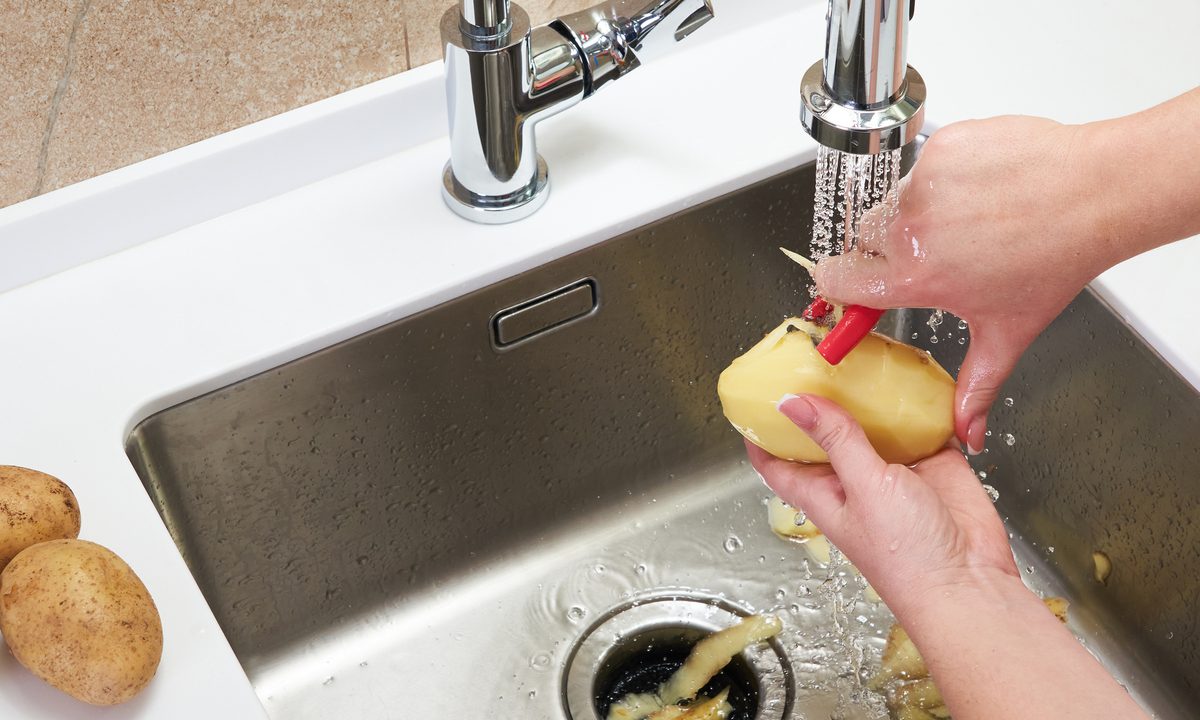A clean home starts with a clean kitchen. That means a kitchen free from germs, trash, and, most of all, food particles. If scraps are missed, they can invite all sorts of stenches, mold, and pests into the room where all your family’s food is made. A garbage disposal is a great way to get rid of food scraps in a sanitary way without having to take the trash out after every meal. When your garbage disposal stops working, though, it can be a tough, unsanitary, and simply messy situation. Homeowners who face this common woe are left wondering: How do I get my garbage disposal to work again? We’ll walk you through what causes the most common garbage disposal failures and how to fix them.

What causes garbage disposals to stop working?
These handy mechanisms are pretty sturdy machines, so often, it’s surprising to homeowners when theirs stops working. What could have gone wrong? While they’re tough gadgets, they’re not invincible. Here are some of the most common causes of broken garbage disposals:
- Jammed blade
- Electrical problems
- Clogs
- Leaks
These issues are certainly a headache, but the good news is that there are DIY fixes for many of them.
How to fix a garbage disposal that won’t turn on
If your garbage disposal isn’t making any noise or movement at all when you flip the switch on, chances are the problem is an electrical one.
Step 1: First, check to make sure the unit is plugged into the wall. If you see evidence that the outlet is damaged or not working, you may need to call an electrician to repair the wiring.
Step 2: If you don’t see any problems with the outlet, try resetting the garbage disposal device by pressing the reset button located at the bottom of the unit.
Step 3: When resetting the unit doesn’t solve the problem, it’s possible that the disposal’s electrical wiring is faulty. If that’s the case, it will either need to be repaired by a professional or replaced completely.
How to fix a garbage disposal that’s clogged or obstructed
Have you turned on your disposal and heard an ungodly grinding noise? This is the most common issue homeowners face with garbage disposals, and the culprit is a jam in the disposal’s blades. It’s likely that an object such as a piece of silverware has found its way down the disposal and is stopping the blades from turning. Here’s how to remove it.
Step 1: Shut off power to the disposal completely by shutting off the power switch to the device or shutting off the power supply at the breaker. There’s always the risk of a faulty electrical wire that could turn the unit on unexpectedly, and you don’t want to risk injury or further damage to the disposal.
Step 2: Grab a flashlight and take a look down the garbage disposal drain to see if you can locate the object.
Step 3: If you see something stuck down there, grab a pair of pliers and use them to reach in and pull out the obstruction. Never use your hands to pull something out of a garbage disposal. Not only could the electrical wires be defective and turn the unit on when you’re not expecting it, but the blades are sharp and can easily cut your fingers.
Step 4: Once the obstruction is removed from the disposal, restore power and test the unit to see if the problem is resolved.

Why is my disposal humming and not working?
Have you flipped the switch on your disposal and hear a sound but don't see any action? What does it mean when your garbage disposal just hums? Basically, the motor of the device is running properly, but the blades aren’t turning. The culprit could be a jam, such as a large piece of sticky or dense food. If that's the case, you should be able to follow the same steps above for clearing an obstruction. However, it could also be that the blades are simply stuck due to excess gunk or corrosion. Here’s how to get them moving again.
Step 1: Turn the garbage disposal off and shut off power to the unit.
Step 2: At the bottom of the unit is a hex socket that attaches to the blades inside. Use a garbage disposal wrench to turn the hex socket clockwise and get the blades moving again.
Step 3: Restore power and test out the unit to be sure the blades have begun working again.
Tips for protecting garbage disposals from damage
Once you’ve repaired your garbage disposal, it’s important to prevent future damage so you don’t have to face this headache again. Keeping your garbage disposal clean and in good working order is actually relatively simple. Here are some best practices for proper garbage disposal operation.
Step 1: Use cold water when you’re using the garbage disposal. Hot water actually causes grease and oils to liquify in the disposal. Once the hot water stops, those oils will solidify again and could cause clogs.
Step 2: Don’t try to grind too much food at a time. One cup of food is about the most a garbage disposal should handle during each grinding session.
Step 3: Clean out the disposal occasionally by pouring a mix of cold water and dish soap down the disposal. Then let the unit run for up to a minute.
Step 4: Sharpen the blades occasionally by grinding up some ice cubes.
Garbage disposals are incredibly convenient for getting rid of food scraps so they don’t stink up your trash bin. When yours breaks, it’s not a pretty scenario. With our guide to fixing and maintaining a garbage disposal, yours will return to good working order and be useful in your kitchen for years to come.




